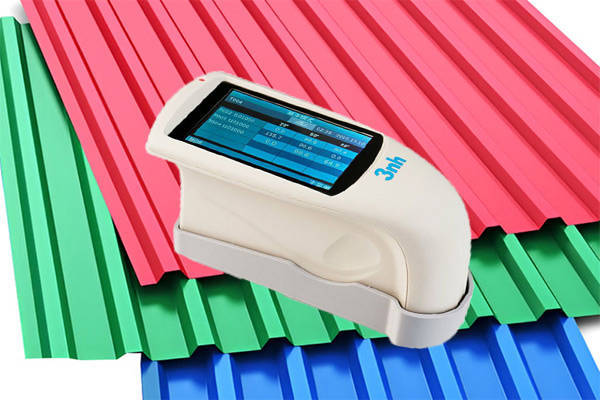The glossiness of paint is one of the key factors affecting its style. The quality of paint glossiness will directly affect the overall atmosphere of the room.
What factors affect the gloss of paint?
- Thickness of paint: The thicker the gloss, the lower the sensitivity.
- Dilution of paint: The more diluted the gloss, the higher the sensitivity.
- Brightness: High-brightness reflective objects will significantly reduce the gloss of the paint.
- Light intensity: The stronger the incident light, the brighter the reflected light.
- Climate conditions: Foggy, rainy and frosty days will reduce the glossiness of the paint.
How to measure and classify gloss?
Glossiness refers to the intensity of light reflected from a material’s surface. How is glossiness measured and classified?
Generally speaking, gloss can be divided into four levels: matte, shimmer, medium gloss and glossy. There are many ways to measure gloss, and three of them are commonly used:
- The human eye observation method uses the human eye to observe the light intensity on the surface of the material, which is divided into four levels: no light, dim light, medium light, and bright light.
- The grating method uses a flat plate with a specific standard grid to measure the intensity of light reflected from the surface of a material. Depending on the specific situation, it is divided into four levels: no light, low light, medium light, and bright light.
- Electron microscope measurement method uses an electron microscope to observe the intensity of light reflected from the surface of a material and directly determine its brightness.
From the three methods above, it can be seen that using a flat plate with a specific standard grid (such as a plate with a 6.5mm or 10mm spacing) to measure the intensity of light reflected from the material surface is the most accurate method. Therefore, this method is often used when dividing gloss.

Paint gloss measurement method:
Paint gloss refers to the ability of a paint surface to reflect light after the paint film dries. When the eye focuses on the reflected image of a light source, the image quality—the surface’s ability to reflect objects—is evaluated. The light source will appear bright or dull (gloss). Gloss is the visual impression created when evaluating a surface; the more light directly reflected, the more pronounced the gloss. Smooth and high-gloss surfaces reflect images clearly. Incident light is directly reflected from the surface, resulting in high gloss. On rough surfaces, light is diffused in all directions, reducing image quality and making reflected objects appear blurry rather than bright. The more evenly the scattered light is, the lower the intensity of the reflected light in the main reflection direction, and the duller the surface appears; this is a medium-low gloss.
However, since the human eye’s judgment of the glossiness of a paint surface is subjective and easily affected by its own factors and environmental factors, a professional gloss meter is needed to measure the glossiness of the paint. The most commonly used one is the NHG268 three-angle gloss meter from Sanen. This gloss meter has three measuring angles of 20°, 60°, and 85°. It can measure at a single angle or at multiple angles simultaneously. It also provides basic measurement mode, statistical measurement mode, continuous measurement mode, quality control measurement (only on the machine position), and other measurement modes. The gloss meter value can be manually input and used in conjunction with PC-side quality management software. It has powerful functional expansion and is widely used in gloss measurement and gloss data transmission in different industries. The specific measurement steps are as follows:
- Preparation of paint film samples
The thickness, uniformity and humidity of the paint film sample will cause changes in surface gloss, so when preparing the sample, it is necessary to ensure that the test sample and the standard are made under the same conditions.
- Turn on the instrument
Press and hold the “Power/Measurement Button” for 3 seconds to turn on the gloss meter. The indicator light will light up and the logo interface will be displayed. Ensure that the working power voltage of the gloss meter is stable. After a few seconds, the instrument will enter the measurement interface.
- Instrument Calibration
After booting up and entering the measurement interface, click the “Main Menu” area on the display screen to enter the main menu. Select “Calibration” in the main menu to enter the “Calibration” menu interface. Most gloss meters on the market can be automatically calibrated. After successful calibration, the instrument will directly enter the measurement interface.
- Angle selection
The 3nh NHG268 tri-angle gloss meter has three gloss angles: 20°, 60°, and 85°. According to ISO 2813 (DIN 67530), “Paints and varnishes – Measurement of specular gloss of non-metallic films,” 20° is specified for high-gloss surfaces, 60° for standard surfaces, and 85° for matte surfaces. When using a tri-angle gloss meter, a single measurement yields three values. For paints with different gloss levels, select the angle that corresponds to the measurement result.
- Start measuring
Select the measurement mode according to different measurement requirements. Generally, the measurement modes of the gloss meter include “basic mode”, “statistical mode” and “continuous mode”. After the user selects the measurement mode, place the gloss meter close to the surface of the latex paint film sample and press the “measure” button. The display will show the gloss of the measured area.
- Data Analysis
After each measurement, the instrument automatically displays the maximum, minimum, average, and mean square error values during the test. These data can be used to analyze the gloss of different locations on the semi-gloss paint film.
- Generate Report
Gloss meters are generally equipped with PC software, which can generate test reports from test data, making it easy to record and archive data after each test.
Why Gloss Measurement Accuracy is Important
The precision of gloss, measurement is not an ephemeral concept. In an industry where image is reputation, it has a direct impact. Think about a car showroom where two cars painted with the same batch of paint end up looking slightly different in bright light. Customers will notice. They might not know why one looks shinier than the other, but they’ll experience inconsistency — and in the business world, inconsistency leads to doubt.
The identical is true in printing and plastics. If the coated optics on a packaging batch are not glossy enough, it destroys brand consistency. The product could be rejected by inspectors if a protective coating doesn’t meet gloss standards. In other words, measuring badly leads to wasted materials, late products and lost confidence.
Learn more :
https://www.threenh.com/Product_News/8-Latest-Features-Gloss-meter-You-Should-Know.html

